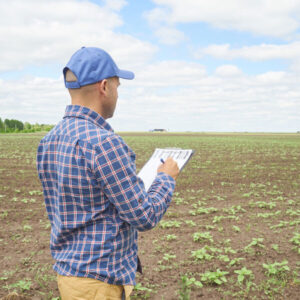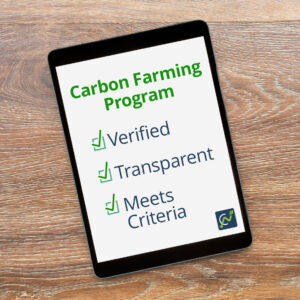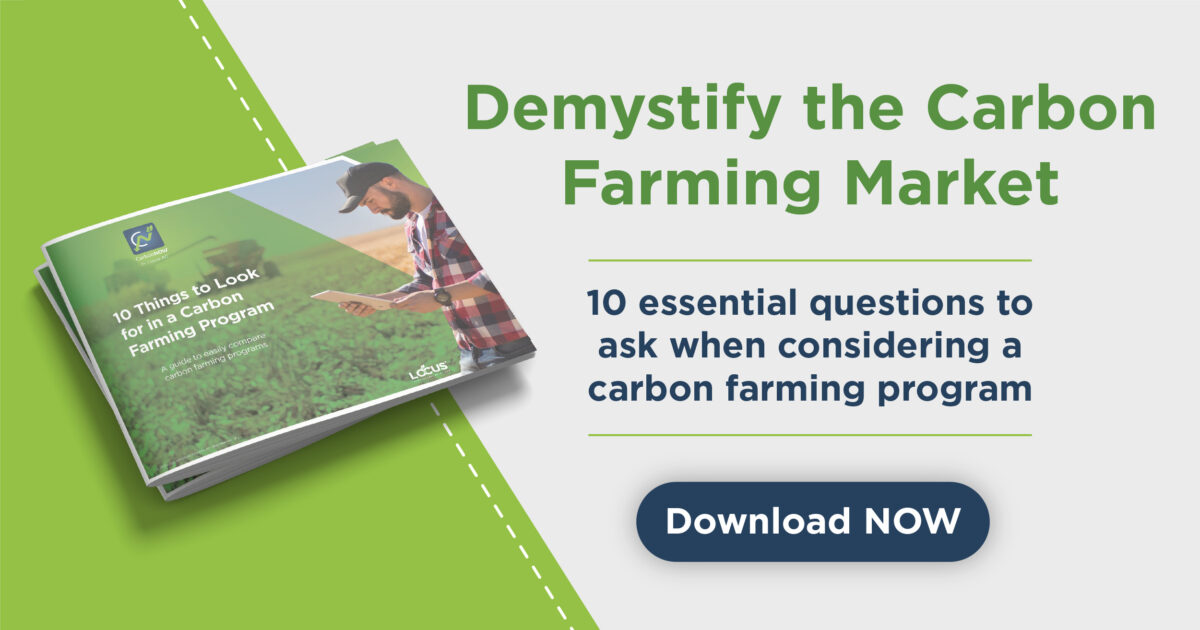
How Third-Party Companies Verify Carbon Farming Programs
Around the world, organizations and individuals are pledging to reduce their greenhouse gas emissions and turning to carbon farming programs to help offset the emissions they can’t eliminate entirely.
Agriculture is central in these efforts, as agricultural lands hold vast potential for carbon sequestration and storage. Carbon farming markets include programs that pay farmers to sequester more carbon and offset the emissions of credit buyers—enabling a triple bottom line for both parties and the environment at large.
Those considering joining a carbon farming program might be wondering, who regulates carbon farming markets?
This blog answers:
- What’s the Difference Between Compliance vs. Voluntary Markets?
- What’s the Regulatory Process Like?
- What’s the Role of Third-Party Verifiers?
What’s the Difference Between Compliance vs. Voluntary Markets?
There are two types of carbon markets: mandatory compliance schemes and voluntary carbon programs.
Compliance schemes are government mandated programs that legally require a reduction in greenhouse gas (GHG) emissions. Depending on the scope of the market, it can be regulated by international, regional, or sub-national carbon reduction schemes.
Voluntary carbon markets operate outside of compliance markets, and enable companies and individuals to buy carbon credits directly from projects, companies, or carbon funds. Voluntary carbon credits use private funding for carbon sequestering projects that would otherwise not exist. Most carbon markets in the U.S. are voluntary, including all carbon farming markets.
Unlike in mandatory schemes, voluntary market standards vary program-to-program.
What’s the Regulatory Process Like?
 In compliance markets, regulatory policies are based on an emissions limit set by national, regional, or international government bodies. For example, the 1997 Kyoto Protocol set binding emission reduction targets for the European Union and 37 industrialized countries and economies.
In compliance markets, regulatory policies are based on an emissions limit set by national, regional, or international government bodies. For example, the 1997 Kyoto Protocol set binding emission reduction targets for the European Union and 37 industrialized countries and economies.
Compliance markets measure each ton of CO2 emissions equivalents in carbon credits or Certified Emissions Reductions (CER). Projects looking to offer CERs need to have their emission reductions validated and registered by the government to prove that they meet the standards set under the compliance regime.
Voluntary carbon markets have their own distinct set of protocols. In voluntary markets, carbon offset registries, also known as third-party verifiers, act as the regulatory body. These independent companies set the policies for carbon credit programs in two primary ways:
- Establishing a standard, which defines how projects are structured, verified, and validated.
- Maintaining a registry to track all of the projects and their associated credits issued under the given standard.
Credit buyers entrust carbon registries to do their due diligence and only put their stamp of approval on projects that meet the standard and follow their protocols.
What’s the Role of Third-Party Verifiers?
 In the voluntary carbon space, third-party registries set the rules and requirements to participate in the market and receive carbon credits. This gives them the power to hold carbon projects accountable to generating high quality credits.
In the voluntary carbon space, third-party registries set the rules and requirements to participate in the market and receive carbon credits. This gives them the power to hold carbon projects accountable to generating high quality credits.
Certification protocols prove that carbon credits are verified, transparent, and meet specific criteria, such as:
- Additionality: a change in practice that facilitates carbon offset
- Permanence: the likeliness that practice changes will not be reversed within the credit period
Offset registries are also responsible for tracking the retirement of credits to avoid multiple buyers purchasing the same verified carbon offset.
In carbon farming markets, program providers can partner with third-party registries to set eligibility requirements and the protocol for monetizing regenerative agriculture practices into premium carbon credits.
The world’s most widely used voluntary offset program is run by Verra, a U.S.-based nonprofit with a carbon standard called the Verified Carbon Standard (VCS). Carbon projects must follow a rigorous assessment process under the VCS Program, ensuring the quality and integrity of every project it certifies.
CarbonNOW, a globally recognized carbon farming program by Locus Agricultural Solutions, follows the standards set by Verra’s methodology to generate premium carbon credits for buyers.
Growers who join CarbonNOW can be sure that their carbon sequestration practices will generate high quality credits for buyers, increase yields, and boost ROI.
Want to learn how Locus AG vital biologicals can increase your yields and profits?
Fill out the form below and one of our agricultural experts will be in touch.



